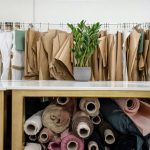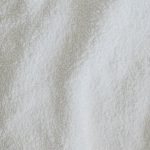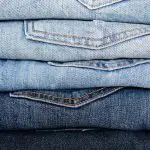Embarking on a journey through the art of sewing, you'll come to understand that each fabric holds its own story, a tale told through its unique texture and composition.
'Needles and Thread: How to Sew With Different Fabrics' will guide you through the intricate world of fabric manipulation. From delicate silks to sturdy denims, this expertly crafted manual will equip you with the knowledge and techniques needed to master the art of sewing with diverse fabrics.
Unravel the mysteries of needle and thread selection, and learn the specialized skills required for working with stretchy knits, leather, and quilting fabrics.
With this comprehensive guide at your side, you'll sew with confidence, transforming each fabric into a masterpiece.
Key Takeaways
- Needle size should be chosen based on the fabric's weight and type.
- Thread selection should complement the fabric's weight and fiber content.
- Different fabrics require different sewing techniques for optimal results.
- Stretchy and knit fabrics require special considerations such as pre-washing and using stretch stitches or ballpoint needles.
Choosing the Right Needles for Fabrics
Selecting the appropriate needle for different fabrics is crucial for achieving professional sewing results. Needle sizes and thread weight play a significant role in determining the success of your sewing project.
When choosing a needle size, consider the fabric's weight and type. For lightweight fabrics such as chiffon or organza, a smaller needle size like 9/65 or 11/75 is suitable to prevent puckering or damage to the delicate fibers.
Medium-weight fabrics like cotton or linen work well with a size 14/90 needle, while heavier fabrics such as denim or upholstery materials require a larger size like 16/100 or 18/110 to pierce through multiple layers.
Additionally, matching the needle size to the thread weight is essential. Using a fine needle with a heavy thread can cause tension issues and result in uneven stitches. On the other hand, a thick needle with a fine thread may create large holes in the fabric.
Selecting Suitable Threads for Different Fabrics
When sewing with different fabrics, it is important to choose suitable threads that complement the fabric's weight and fiber content for optimal results. Thread weight and fabric compatibility are crucial factors to consider when selecting the right thread for your project. Thicker fabrics like denim or upholstery require heavier threads such as a size 40 or 30, while lightweight fabrics like silk or chiffon are better suited for finer threads like size 60 or 70. Additionally, the fiber content of the fabric, whether it's cotton, polyester, or wool, should also influence your thread selection to ensure the best results.
To help you make informed decisions, here's a table to guide you in matching thread weight with fabric type and color:
| Fabric Type | Recommended Thread Weight | Suitable Thread Colors |
|---|---|---|
| Denim | 30-40 | Blue, Indigo |
| Silk | 60-70 | White, Black, Beige |
| Cotton | 40-50 | Off-White, Tan, Navy |
| Wool | 40-50 | Gray, Brown, Cream |
Color matching is equally important, as the thread should seamlessly blend with the fabric. By considering these factors, you can ensure that your choice of thread complements the fabric, resulting in professional-looking and durable stitches.
Sewing Techniques for Delicate Fabrics
To sew delicate fabrics effectively, you need to master techniques that ensure gentle handling and precise stitching. Delicate fabrics such as silk, lace, and chiffon require special care to achieve professional results. Here are essential tips for sewing delicate fabrics:
- Silk Techniques: When sewing silk, use a fine needle and silk thread to prevent snags and visible stitches. To reinforce seams, use lightweight interfacing to add stability without adding bulk.
- Embroidery Tips: When embroidering delicate fabrics, use a stabilizer to prevent puckering. Select delicate embroidery designs and use a hoop to keep the fabric taut.
- Lace Sewing: When sewing lace, use sharp scissors to cut the intricate patterns and delicate edges. To avoid damaging the fabric, sew slowly and carefully, using a matching thread color.
- Chiffon Stitching: When sewing chiffon, use a sharp, fine needle and a narrow zigzag stitch to prevent the fabric from stretching and distorting. Gently press seams with a low-heat iron to avoid damaging the delicate fibers.
Mastering these techniques will enable you to work confidently with delicate fabrics, achieving professional results while preserving the fabric's delicate nature.
Tips for Sewing With Denim and Heavy Fabrics
For sewing with denim and heavy fabrics, you'll need to use a heavier needle and a sturdy thread to ensure secure stitching without causing damage to the fabric. When sewing denim or canvas, a size 16 or 18 denim needle is recommended as it can easily penetrate the thick layers without breaking. Additionally, consider using a topstitching needle, which has a larger eye to accommodate heavier threads.
When selecting a thread for heavy fabrics, opt for a polyester or heavy-duty thread, as they're more durable and less likely to break when sewing through multiple layers. It's also essential to lengthen your stitch to prevent the thread from bunching up or breaking.
When sewing heavy fabrics, such as denim or canvas, it's crucial to use a walking foot attachment on your sewing machine to ensure that the layers are fed evenly and prevent uneven stitching. Moreover, using a longer stitch length and sewing slowly can help you achieve neat and professional-looking seams.
These heavy fabric techniques will ensure that your sewing projects with denim and other heavy materials are strong and durable.
Working With Stretchy and Knit Fabrics
When working with stretchy and knit fabrics, you'll need to adjust your needle and thread to accommodate the unique properties of these materials. Here are some essential tips to help you master the art of sewing with stretchy and knit fabrics:
- Fabric Preparation: Before sewing with stretchy and knit fabrics, it's crucial to prepare the fabric by pre-washing and drying it to prevent shrinkage after the garment is made.
- Stitch Tension: Adjust your machine's stitch tension to a stretch stitch or a narrow zigzag stitch to allow the seams to stretch with the fabric, preventing them from popping when the garment is worn.
- Handling Seams: When sewing seams on stretchy and knit fabrics, use a stretch or ballpoint needle to prevent skipped stitches and fabric damage.
- Hemming Techniques: For a professional finish, consider using a twin needle to create a stretchy and neat hem that moves with the fabric without breaking the stitches.
- Testing and Practice: Always test your stitches on a scrap piece of fabric to ensure the settings are correct before sewing your garment, and practice sewing on scraps to get a feel for working with stretchy and knit fabrics.
Mastering these techniques will help you confidently work with stretchy and knit fabrics, allowing you to create beautiful and comfortable garments.
Needle and Thread Combinations for Leather and Vinyl
When working with leather and vinyl, you'll need to adjust your needle and thread to accommodate the unique properties of these materials.
For leather, it's best to use a needle specifically designed for leather sewing, such as a wedge point needle, which can easily penetrate the tough material without causing damage. Additionally, a heavy-duty polyester or nylon thread is recommended for leather projects due to its strength and durability.
When sewing with vinyl, a leather needle can also be used, but a size 14 or 16 is generally suitable to prevent damage to the material. As for the thread, a bonded nylon thread works well with vinyl due to its resistance to UV rays and abrasion.
It's important to note that when sewing leather or vinyl, using a longer stitch length is advisable to prevent puncturing the material excessively. Additionally, using clips instead of pins to hold the fabric together can prevent unsightly holes.
Sewing Considerations for Sheer and Lightweight Fabrics
To sew sheer and lightweight fabrics, you'll need to select the appropriate needle and thread to prevent snagging and ensure secure stitching. These delicate fabrics require special attention to detail in fabric preparation, stitching techniques, handling seams, and finishing edges. Here are some key considerations to keep in mind:
- Needle Choice: Opt for a fine needle, such as a size 9 or 11, to avoid leaving noticeable holes in the fabric.
- Thread Selection: Use lightweight threads like silk, cotton, or polyester to prevent adding bulk to the seams.
- Fabric Preparation: Gently pre-wash and press the fabric to remove any wrinkles and ensure it's clean before cutting and sewing.
- Stitching Techniques: Employ delicate stitches like a straight stitch or a narrow zigzag to maintain the fabric's drape and prevent puckering.
- Handling Seams and Finishing Edges: Consider French seams or using a serger to encase the raw edges, preventing fraying and maintaining a clean, professional finish.
When working with sheer and lightweight fabrics, attention to these details will elevate the quality of your sewing projects and ensure the longevity of the finished garment.
Specialized Needles and Threads for Quilting Fabrics
When it comes to quilting fabrics, specialized needles and threads are essential for achieving the best results.
Quilting thread options and needle types play a crucial role in ensuring that your quilting project turns out beautifully.
Understanding the right tools for the job will help you create strong, durable stitches that enhance the overall quality of your quilt.
Quilting Thread Options
For quilting with different fabrics, you'll need specialized needles and threads designed specifically for quilting projects. When choosing quilting thread options, consider the following:
- Thread Weight Options: Select the appropriate thread weight based on the fabric and desired quilt effect. Lighter weight threads work well for intricate designs, while heavier threads are suitable for bold topstitching.
- Thread Color Choices: Coordinate thread colors with your fabric to ensure the stitches complement the overall quilt design.
- Quilting Thread Tension: Adjust the tension on your sewing machine to accommodate the specific thread you're using, ensuring even and balanced stitches.
- Quilting Stitch Patterns: Experiment with different quilting stitch patterns to enhance the visual appeal and texture of your quilt.
Mastering these quilting thread options will elevate the quality and aesthetic of your quilting projects.
Needle Types for Quilting
Consider using specialized needles designed specifically for quilting projects when sewing with different quilting fabrics. Needle sizes play a crucial role in achieving the best results. For piecing, a size 70/10 or 80/12 needle is suitable for most quilting cotton fabrics, while a size 90/14 may be needed for denser fabrics like batiks. When quilting through multiple layers, a larger needle such as a 100/16 is recommended.
Additionally, adjusting thread tension is vital when quilting. Proper tension ensures that the stitches sink into the quilt sandwich just right. Test your tension on a scrap quilt sandwich before starting your project to avoid any issues.
Frequently Asked Questions
Can I Use the Same Needle for Sewing Both Leather and Lightweight Fabrics?
You can use the same needle for sewing both leather and lightweight fabrics, but it's crucial to choose the right needle. Using a leather needle for leather and a universal needle for lightweight fabrics will help you sew without issues.
What Type of Thread Is Best for Sewing Activewear or Athletic Knit Fabrics?
For sewing activewear or athletic knit fabrics, the best thread is polyester or nylon. Ensure proper thread tension and stitch length, use stretch stitches, and a needle size appropriate for the fabric weight.
Are There Any Special Techniques for Sewing With Velvet or Velour Fabrics?
When sewing velvet or velour fabrics, you should use a sharp needle to prevent snags and a fine thread to avoid bulk. It's important to handle these delicate fabrics with care to achieve professional-looking results.
Can I Use a Regular Sewing Machine Needle for Quilting, or Do I Need a Specialized Quilting Needle?
Yes, you can use a regular sewing machine needle for quilting, but a specialized quilting needle is recommended for better results. The specialized needle is designed to handle the thickness of quilting fabrics and provide smoother stitching.
How Can I Prevent Snagging or Puckering When Sewing With Satin or Silk Fabrics?
To prevent snagging or puckering when sewing with satin or silk fabrics, use a fine needle and a lightweight thread. Adjust your machine's tension and stitch length, and consider using a walking foot to ensure smooth, even stitching.
- How Does Ring Spun Cotton Affect Garment Fit and Shape Retention? - August 13, 2024
- What Are the Challenges in Producing Ring Spun Cotton? - August 13, 2024
- Is Ring Spun Cotton Suitable for Plus-Size Clothing? - August 13, 2024






